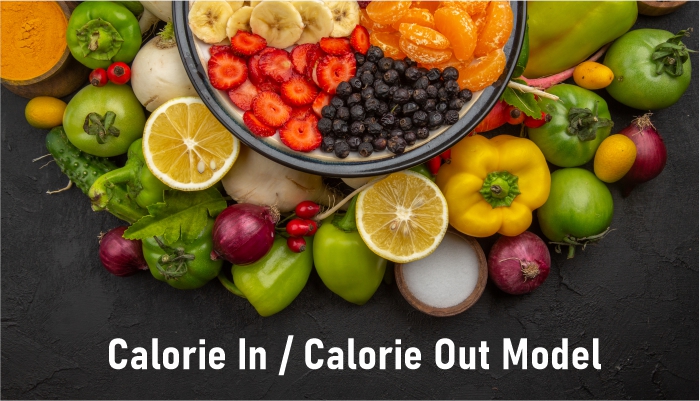“Diet” literally means, food which we usually eat. But in today’s world we mostly use word diet to mention, we are consuming food with some restriction or controlling portions to lose a few kilos. 100+ different dietary theories are available, and people do not hesitate to go on a diet which involves starving themselves for weeks or even months.
It is utmost important to remember, one cannot follow diet with excessive restriction for long and in addition, it puts negative effect on health. Top of that, even after following diet and losing few kilos, most people must have experienced that the weight they had lost, quickly comes back once they stop dieting.
So what is the best approach here? Let’s discuss.
1) Understand Calories In/ Calories Out model: We get calories from the food we consume. “Calories in” means total calorie intake. And “calorie out” means calories burnt by the body.
The body uses the energy/calorie for 3 main processes as mentioned below.
a) Basic processes like respiration, blood circulation, immunity, reproduction, removal of waste, formation of new cells etc.
b) Metabolism. The body consumes about 10 to 15% of calories to digest food and absorb nutrients from it.
c) Physical activity. Body consumes calorie for activities like to sit, get up, stand, walk, to do daily chores, exercise etc.
If we understand basics of “calorie in, calorie out model”, “calorie in” (-) “calories spent” and balance or excess calories which are unconsumed, will be stored in our body as fat. And it is considered as the main cause of weight gain. If we understand this basic thing and make the necessary changes in diet and increase physical activity simultaneously, it will become easier for us to maintain or reduce weight.
Here, special care should be taken to eat a good quality food which is rich in nutrients and low in calories. Calories are relatively low in fruits, vegetables, curd, millets etc. Milk, ghee, butter, cheese, paneer, cream, nuts and seeds, oil etc. are considered as high calorie food. Eat nutrition dense and low-calorie foods. One can cut calories by reducing sweets, fried food & junk food as well.
2) Small changes: Cutting down calories is different than staying hungry. Excessive restriction will result in cheating, and we might end up consuming sweet/salty food which is high in calorie. Instead, to focus on small changes as mentioned below to stay on track.
- Avoid eating small meals throughout the day and follow discipline in eating breakfast, lunch, and dinner on time.
- Start your meal with salad. This will nourish you and make you feel full for a longer time. Excellent way to reduce/maintain weight.
- At home, keep fresh fruits on a center table or at a place which is clearly visible. This will encourage you to consume more fruits.
- Consume one fruit in breakfast and one to beat mid-afternoon hunger. This will help you reduce cravings.
- Target to finish dinner by 8 pm to ease digestive process.
- Avoid consuming liquid calories in excess.
- Experiment with few fasting techniques. It is beneficial to include fasting occasionally in our lifestyle.
3) Follow moderation when eat out: As mentioned above, excessive restrictions is the biggest reason behind craving and binge eating. Do not restrict yourself excessively from eating junk food/less healthy food. Moderation is a key here. It is wise to eat healthy food most of the times and eat out occasionally, that too in moderation.
Lastly,
Frequent hunger or craving is more when our body is lacking nutrients. To reduce cravings, one should focus on feeding body food which is nutrient dense and follow basic calorie in/out model to reduce/maintain weight in long term.
Thank you.

